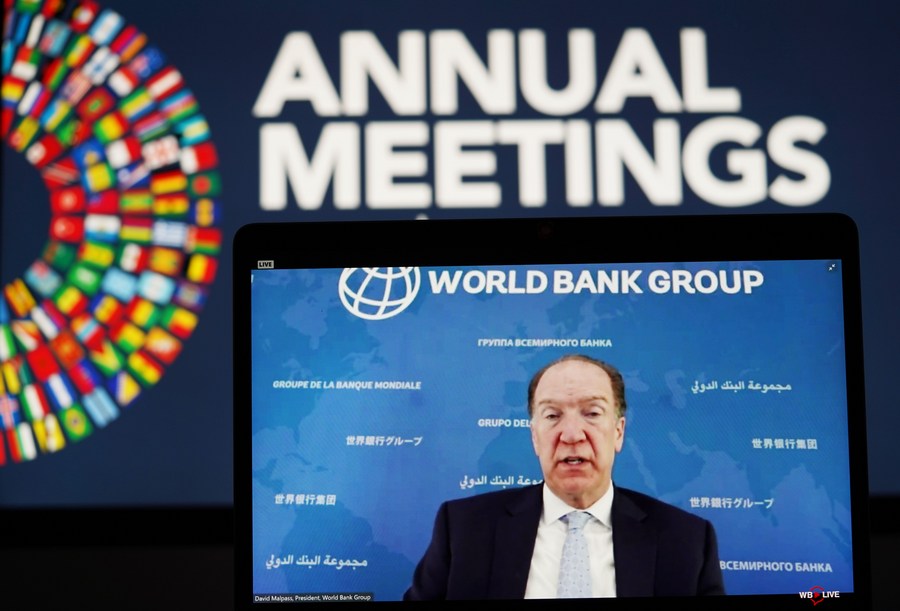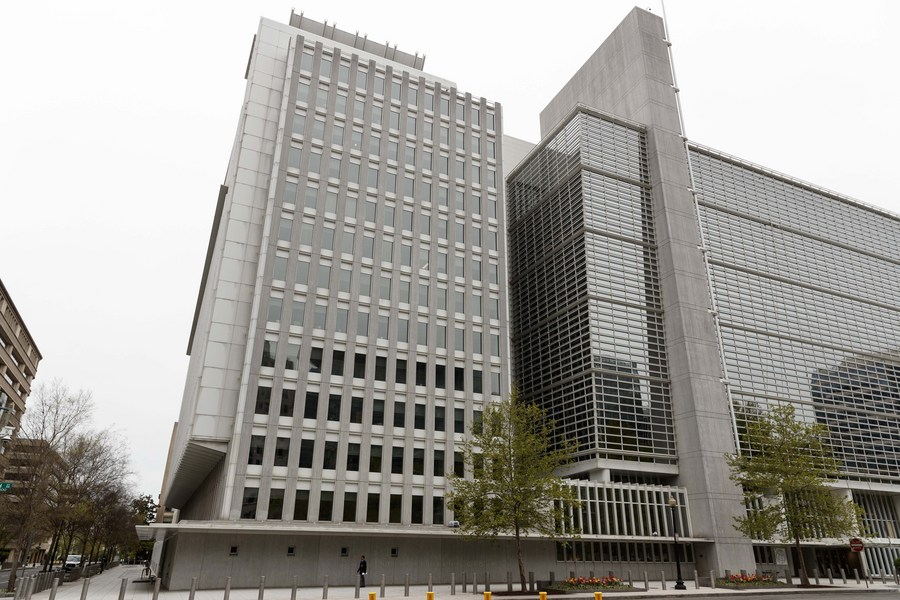World Bank expects debt crisis to continue to worsen in 2022

World Bank Group President David Malpass speaks at a virtual news conference during the annual meetings of the World Bank Group and the International Monetary Fund (IMF) in Washington, D.C., the United States, on Oct. 14, 2020. (Xinhua/Liu Jie)
Against the backdrop of elevated inflation, expected rate hikes, Russia-Ukraine war and slowing growth in China, the World Bank has lowered its projected 2022 global growth rate to 3.2 percent, down from 4.1 percent projected in January, according to President David Malpass.
WASHINGTON, April 18 (Xinhua) -- Due to high debt and deficit levels, countries are "under severe financial stress," and the debt crisis is expected to "continue to worsen" in 2022, World Bank Group President David Malpass said on Monday.
Noting that debt is one of the two big problems facing global growth, Malpass said at a Spring Meetings media roundtable that 60 percent of low-income countries are already in debt distress or at high risk of it.
Debt crises and currency depreciations have a burden that "falls heavily on the poor," he said.
The 2022 Spring Meetings of the International Monetary Fund (IMF) and the World Bank Group are set to take place from Monday, April 18, through Sunday, April 24.
The other big problem for global growth is inflation, which is "causing immense strain," Malpass said, noting that policies need to be adjusted to enhance supply, not just increasing demand.
"Markets are forward looking so it's vital for governments and private sectors to state that supply will increase and that their policies will foster currency stability to bring down inflation and increase growth rates," said Malpass.
Amid the war in Ukraine, the World Bank chief said he is deeply concerned about developing countries, which are facing sudden price increases for energy, fertilizer and food, and the likelihood of interest rate increases.
Against the backdrop of elevated inflation, expected rate hikes, Russia-Ukraine war and slowing growth in China, the World Bank has lowered its projected 2022 global growth rate to 3.2 percent, down from 4.1 percent projected in January, according to Malpass.

Photo taken on April 17, 2020 shows the World Bank headquarters in Washington D.C., the United States. (Photo by Ting Shen/Xinhua)
The World Bank chief also noted that global trade is still facing quotas, high import tariffs, high export tariffs, expensive food price subsidies, and even export bans on food products. "These should stop," Malpass said.
He urged the international community to immediately step up emergency assistance for food insecurity and help bolster social safety nets.
Malpass' remarks came just a few days after he, along with the heads the IMF, the UN World Food Program, and the World Trade Organization called for urgent, coordinated action on food security to help vulnerable countries amid surging prices and supply shortages.
World Bank estimates warn that for each one percentage point increase in food prices, 10 million people are thrown into extreme poverty worldwide.
The World Bank is providing roughly 17 billion U.S. dollars per year to strengthen food security - a big part of the global effort, according to Malpass.
Photos
Related Stories
- World Bank projects developing East Asia Pacific to grow 5 pct in 2022
- Commentary: The prime culprit behind debt traps
- Report finds only 13 percent of young consumers in China are not in debt
- U.S. House approves short-term debt limit increase to avert default
- U.S. Senate reaches deal on short-term debt-limit extension as potential default looms
Copyright © 2022 People's Daily Online. All Rights Reserved.










